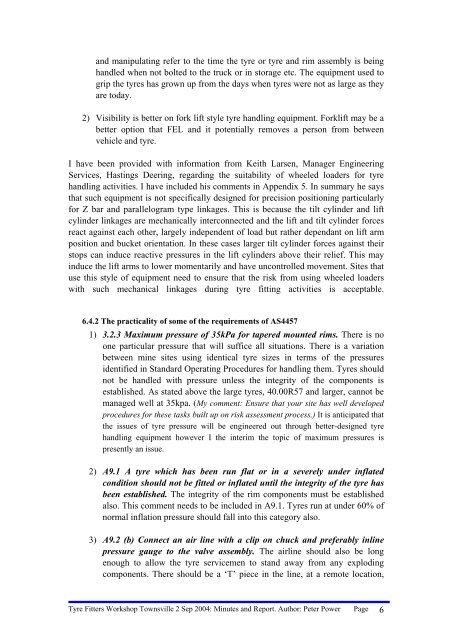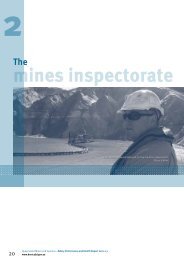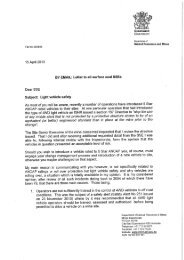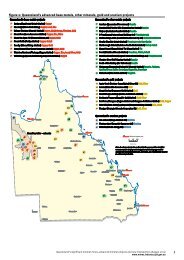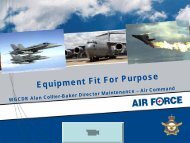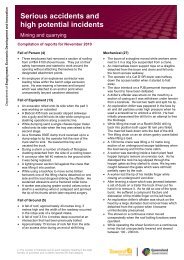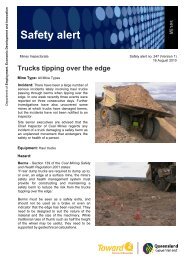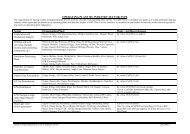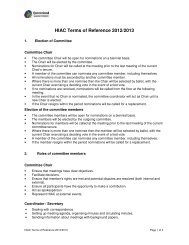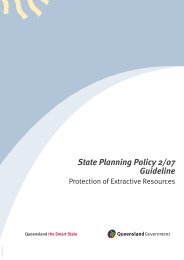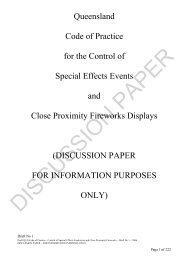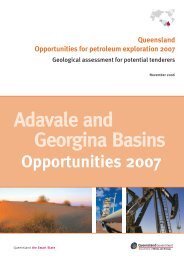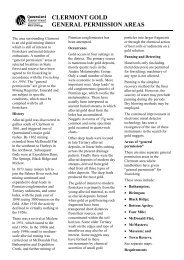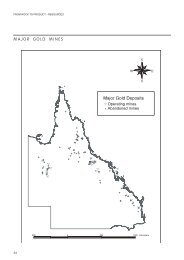(Introduction, results, summary) (PDF, 69 kB) - Queensland Mining ...
(Introduction, results, summary) (PDF, 69 kB) - Queensland Mining ...
(Introduction, results, summary) (PDF, 69 kB) - Queensland Mining ...
You also want an ePaper? Increase the reach of your titles
YUMPU automatically turns print PDFs into web optimized ePapers that Google loves.
and manipulating refer to the time the tyre or tyre and rim assembly is being<br />
handled when not bolted to the truck or in storage etc. The equipment used to<br />
grip the tyres has grown up from the days when tyres were not as large as they<br />
are today.<br />
2) Visibility is better on fork lift style tyre handling equipment. Forklift may be a<br />
better option that FEL and it potentially removes a person from between<br />
vehicle and tyre.<br />
I have been provided with information from Keith Larsen, Manager Engineering<br />
Services, Hastings Deering, regarding the suitability of wheeled loaders for tyre<br />
handling activities. I have included his comments in Appendix 5. In <strong>summary</strong> he says<br />
that such equipment is not specifically designed for precision positioning particularly<br />
for Z bar and parallelogram type linkages. This is because the tilt cylinder and lift<br />
cylinder linkages are mechanically interconnected and the lift and tilt cylinder forces<br />
react against each other, largely independent of load but rather dependant on lift arm<br />
position and bucket orientation. In these cases larger tilt cylinder forces against their<br />
stops can induce reactive pressures in the lift cylinders above their relief. This may<br />
induce the lift arms to lower momentarily and have uncontrolled movement. Sites that<br />
use this style of equipment need to ensure that the risk from using wheeled loaders<br />
with such mechanical linkages during tyre fitting activities is acceptable.<br />
6.4.2 The practicality of some of the requirements of AS4457<br />
1) 3.2.3 Maximum pressure of 35kPa for tapered mounted rims. There is no<br />
one particular pressure that will suffice all situations. There is a variation<br />
between mine sites using identical tyre sizes in terms of the pressures<br />
identified in Standard Operating Procedures for handling them. Tyres should<br />
not be handled with pressure unless the integrity of the components is<br />
established. As stated above the large tyres, 40.00R57 and larger, cannot be<br />
managed well at 35kpa. (My comment: Ensure that your site has well developed<br />
procedures for these tasks built up on risk assessment process.) It is anticipated that<br />
the issues of tyre pressure will be engineered out through better-designed tyre<br />
handling equipment however I the interim the topic of maximum pressures is<br />
presently an issue.<br />
2) A9.1 A tyre which has been run flat or in a severely under inflated<br />
condition should not be fitted or inflated until the integrity of the tyre has<br />
been established. The integrity of the rim components must be established<br />
also. This comment needs to be included in A9.1. Tyres run at under 60% of<br />
normal inflation pressure should fall into this category also.<br />
3) A9.2 (b) Connect an air line with a clip on chuck and preferably inline<br />
pressure gauge to the valve assembly. The airline should also be long<br />
enough to allow the tyre servicemen to stand away from any exploding<br />
components. There should be a ‘T’ piece in the line, at a remote location,<br />
Tyre Fitters Workshop Townsville 2 Sep 2004: Minutes and Report. Author: Peter Power Page 6


